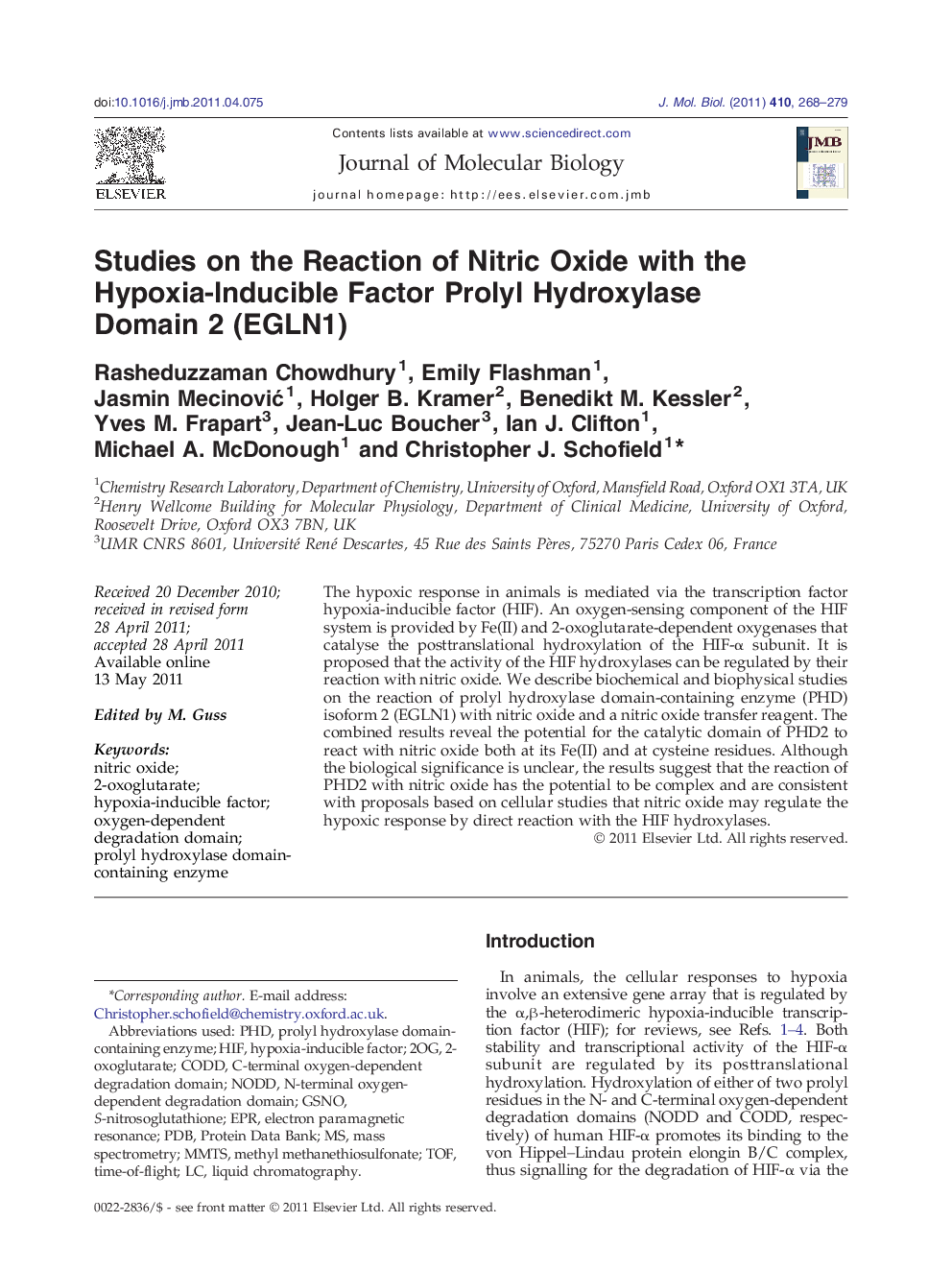| Article ID | Journal | Published Year | Pages | File Type |
|---|---|---|---|---|
| 2185194 | Journal of Molecular Biology | 2011 | 12 Pages |
The hypoxic response in animals is mediated via the transcription factor hypoxia-inducible factor (HIF). An oxygen-sensing component of the HIF system is provided by Fe(II) and 2-oxoglutarate-dependent oxygenases that catalyse the posttranslational hydroxylation of the HIF-α subunit. It is proposed that the activity of the HIF hydroxylases can be regulated by their reaction with nitric oxide. We describe biochemical and biophysical studies on the reaction of prolyl hydroxylase domain-containing enzyme (PHD) isoform 2 (EGLN1) with nitric oxide and a nitric oxide transfer reagent. The combined results reveal the potential for the catalytic domain of PHD2 to react with nitric oxide both at its Fe(II) and at cysteine residues. Although the biological significance is unclear, the results suggest that the reaction of PHD2 with nitric oxide has the potential to be complex and are consistent with proposals based on cellular studies that nitric oxide may regulate the hypoxic response by direct reaction with the HIF hydroxylases.
Graphical AbstractStudies on the reaction of HIF PHD isoform 2 (PHD2/EGLN1) with nitric oxide and a nitric oxide transfer reagent (S-nitrosoglutathione) reveal the potential for PHD2 to react with nitric oxide both at its Fe(II) and at cysteine residues. Although their biological significance is unclear, the results suggest that the reaction of PHD2 with nitric oxide has the potential to be complex and are consistent with proposals based on cellular studies that nitric oxide may regulate the hypoxic response by direct reaction with the HIF hydroxylases.Figure optionsDownload full-size imageDownload high-quality image (277 K)Download as PowerPoint slideResearch Highlights► NO has a bimodal action on the HIF system with respect to oxygen availability. ► NO reacts with PHD2 both at its Fe(II) and at cysteine residues. ► NO competes with oxygen for binding to the active-site Fe(II) and ablates catalytic activity of PHD2. ► Although S-nitrosylated PHD2 is active, it can release NO in the presence of catalysts, and the released NO may inhibit via binding at its Fe(II) centre.
